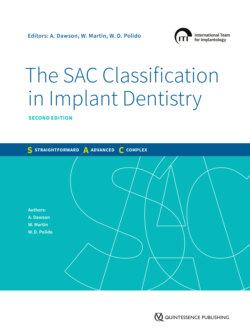Читать книгу The SAC Classification in Implant Dentistry - Группа авторов - Страница 26
2.3.2 Reducing clinician-related risk 2.3.2.1 RECOGNIZING “HUMAN FACTOR” RISKS
ОглавлениеWhat have been described as “human factors” are becoming recognized as sources of error in health care provision. Much of the research in this area comes from the commercial aviation industry, but these findings are beginning to permeate into health care safety considerations.
A second edition of Renouard and Rangert’s book about risk factors was published in 2008 (Renouard & Rangert, 2008) and brought the topic of experience and human factors to the discussion.
In a recent review of these factors and their influence in dental implantology, Renouard and coworkers (Renouard et al, 2017) described five hazardous attitudes or behaviors that are potentially detrimental to safe practice. Originally identified in aviation, these types are:
1. Impulsiveness The urge to get things done quickly, without necessarily considering potential dangers.
2. Anti-authority The attitude held by some practitioners that rules, regulations, and protocols are for others, and do not pertain to them.
3. Invulnerability Practitioners who believe that adverse outcomes only happen to others, and not to them.
4. Macho The belief that a practitioner must be constantly demonstrating their superiority over others. While this is mostly a male trait, it can affect women as well.
5. Resignation The belief that no matter what a practitioner does, it will not have any effect on the outcome.
